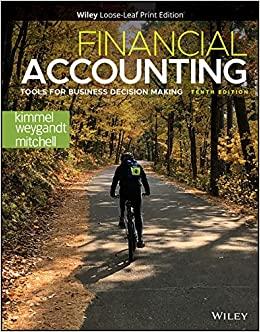Question
Orders for a particular spare part have been analysed and it has been found that the time between orders follows a negative exponential distribution. The
Orders for a particular spare part have been analysed and it has been found that the time between orders follows a negative exponential distribution. The average number of orders per day is 5.
- Simulate the arrival times of 8 orders, starting at the beginning of the first row of the random number table, working across the row and using 4 digits for each random number. Calculate the average time between the simulated orders, assuming that there was an order immediately before the start of your simulation and working to three decimal places. Explain the reason for the difference between your answer and the true average. What can be done to reduce this difference?
There are two types of orders, namely: i) 'replenishment of stock orders' ('Stock'), and ii) 'emergency orders' ('Emergency'). From past experience, it is known that 70% of orders are 'Stock' orders and 30% of orders are 'Emergency' orders. For Stock orders, there is an equal chance that the order will be for 2, 4, 6, 8 or 10 units. For Emergency orders, there is an 80% chance that the order will be for 1 unit, and a 20% chance that the order will be for 2 units.
- Simulate 5 orders, starting at the beginning of the second row of the random number table, working across the row and using 4 digits for each random number. Assume that the times between orders have already been simulated and are as follows (all numbers are expressed in fractions of days): 0.103, 0.229, 0.167, 0.443, 0.154. What is the total number of units ordered in thefirstday?
- A longer simulation of the units ordered has been conducted and is asfollows:
| Arrival time of order | Type of order | Number of Units |
0.284 | Stock | 4 |
0.431 | Emergency | 1 |
0.701 | Stock | 2 |
0.911 | Stock | 4 |
1.045 | Stock | 6 |
1.189 | Emergency | 2 |
1,521 | Stock | 2 |
1.734 | Emergency | 1 |
Simulate the stock-holding levels and the number of units filled from stock, assuming that the stock-level at the beginning of the simulation is 4 units and that deliveries of 6 units are received at the end of every half-day (ie at times, 0.5, 1.0, 1.5 etc). In your simulation, assume that Stock orders and Emergency orders are treated equally and that, if any order cannot be fulfilled immediately, then it will be filled as fully as possible, with the remaining units fulfilled when stock is available. (eg if there is an order for 4 units, and 3 are in stock, then 3 units will be made available immediately and the remaining 1 unit supplied when there is availablestock).
- In order to assess the outcome of the simulation in part (c), some summary statistics are required. Suggest some statistics, giving the reasons for your choice. (There is no need to calculate the statistics).
Step by Step Solution
There are 3 Steps involved in it
Step: 1

Get Instant Access to Expert-Tailored Solutions
See step-by-step solutions with expert insights and AI powered tools for academic success
Step: 2

Step: 3

Ace Your Homework with AI
Get the answers you need in no time with our AI-driven, step-by-step assistance
Get Started


